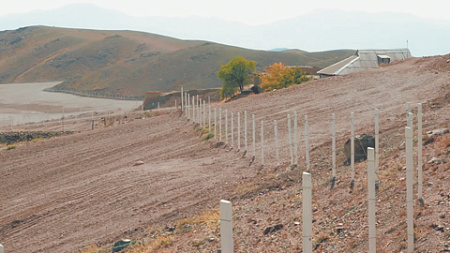Tajikistan Tackles Soviet Nuclear Legacy with Russian Help

Russia and Tajikistan are deepening their cooperation to address the dangerous environmental legacy of Soviet-era uranium mining, with Russia’s state atomic energy corporation, Rosatom, launching the next phase of a major reclamation project. The new effort will focus on rehabilitating two former uranium sites in Tajikistan’s northern Sughd region, a continuation of a bilateral agreement aimed at cleaning up hazardous radioactive waste left behind from the Cold War.
The challenge dates back to the dawn of the nuclear age. A massive uranium deposit discovered near the village of Taboshar in 1925 became a cornerstone of the Soviet atomic program, supplying raw material for the first Soviet atomic bomb. After the USSR’s collapse and a devastating civil war in the 1990s, the newly independent Tajikistan inherited defunct processing plants and vast tailings dumps—open-air repositories of radioactive waste—that contaminated soil and water and posed a significant regional threat, with the risk of landslides carrying toxic material across borders.
For years, Tajikistan, weakened by conflict and economic hardship, struggled to manage the crisis. International appeals and proposed programs, including a 2012 initiative by the Eurasian Economic Community (EurAsEC), failed to materialize due to a lack of funding. A turning point came in 2017 with a landmark agreement between Moscow and Dushanbe specifically for the reclamation of these sites. The first phase, completed ahead of schedule in 2022 at a cost of around 700 million rubles, successfully neutralized a notorious 65-meter-high waste pile known locally as the “yellow mountain,” transforming the 14-hectare hazardous zone into a safe, contoured hill covered with native plants.
Rosatom has now announced a new contract to tackle two more sites: a 3.45-hectare tailings dump in the mountain town of Adrasman containing 400,000 tons of waste, and a large industrial waste dump near the city of Istiklol (formerly Taboshar). Specialists have begun comprehensive engineering and radiation surveys to design the reclamation plan, which will include dismantling and safely burying contaminated industrial structures. All project plans will be subject to state and environmental review under Tajik law.
While cleaning up its past, Tajikistan is also looking to its future as a potential major player in the global uranium market. Despite the exhaustion of the northern deposits, the country is estimated to hold 14-16% of the world’s uranium reserves, primarily concentrated in the remote Pamir mountains. One site, Lake Khinokul, has uranium concentrations so high it ranks third globally among lakes, making extraction potentially far cheaper than traditional hard-rock mining. These vast, untapped resources are fueling Dushanbe’s ambitions to attract foreign investment and re-establish itself as a key uranium supplier.